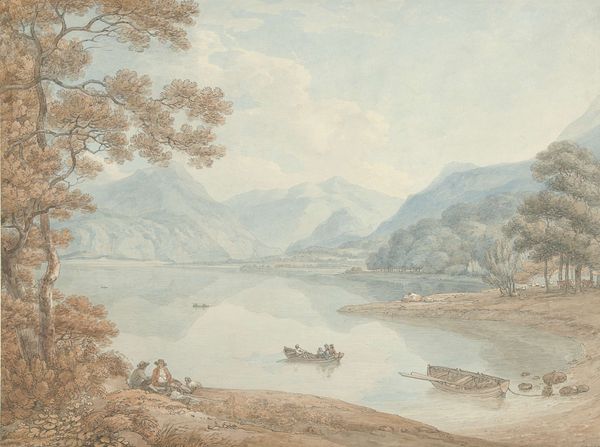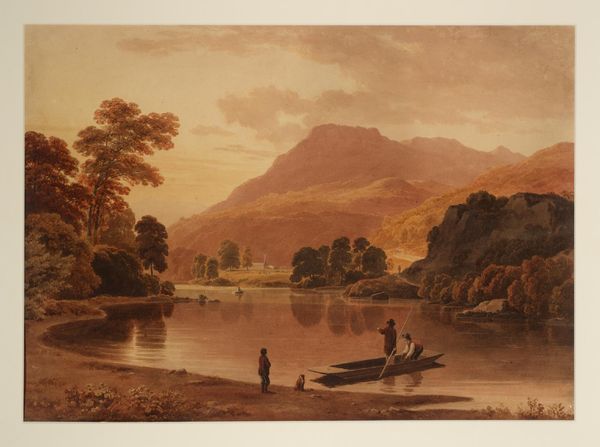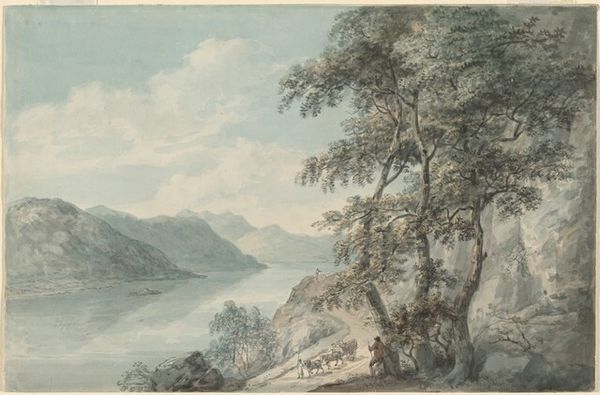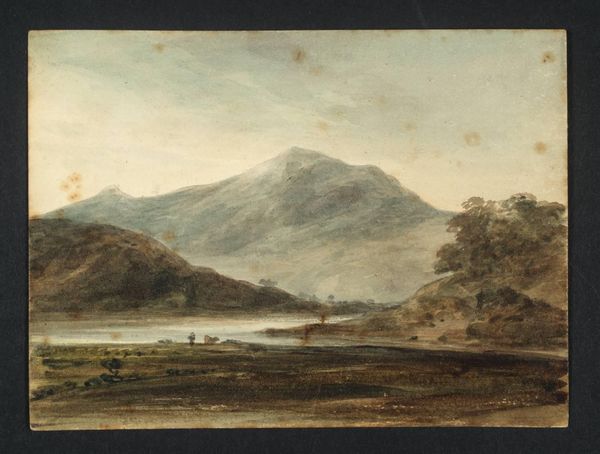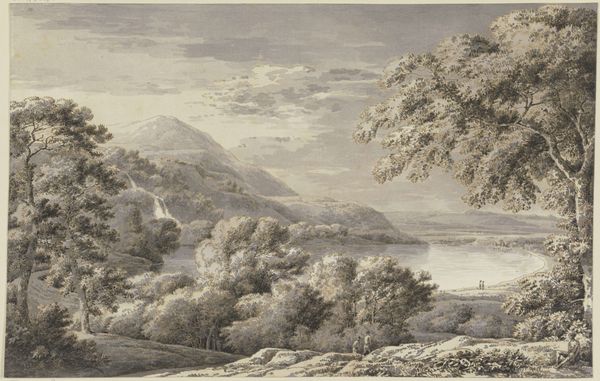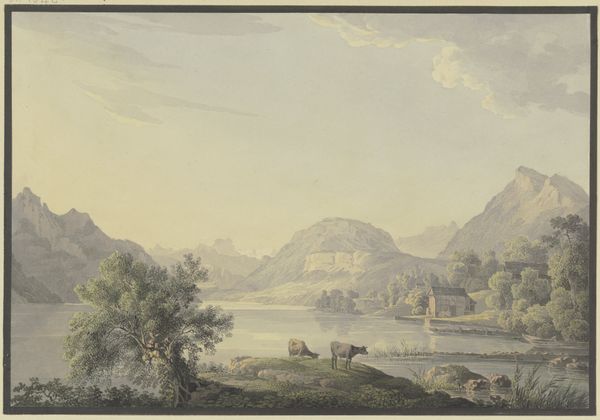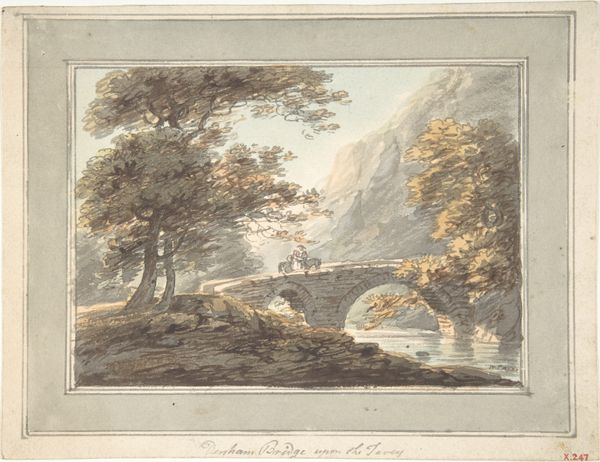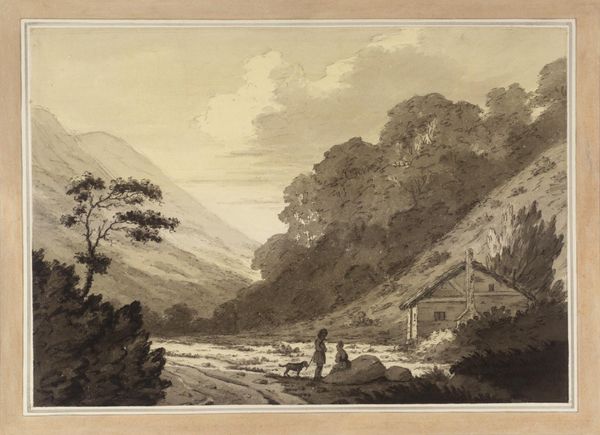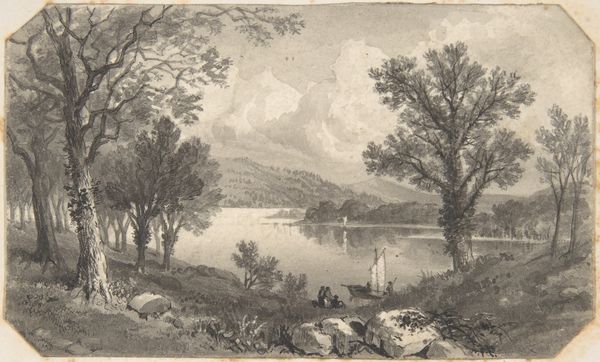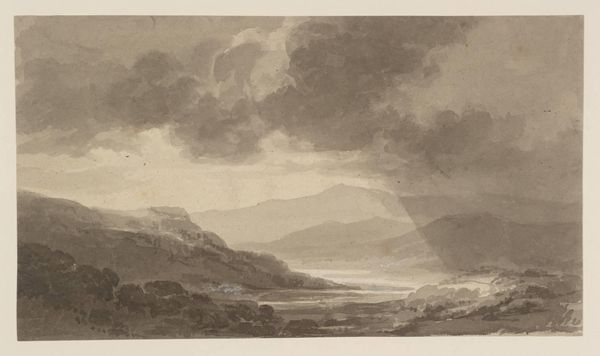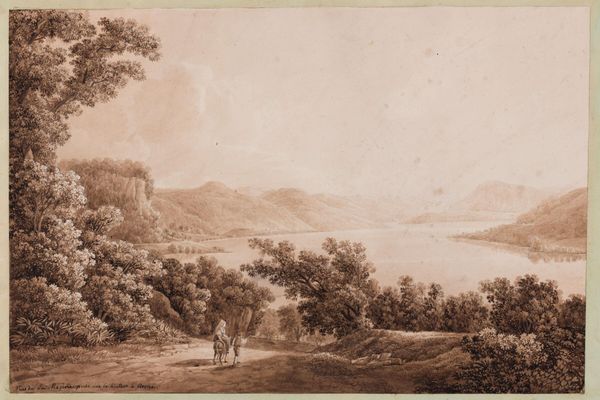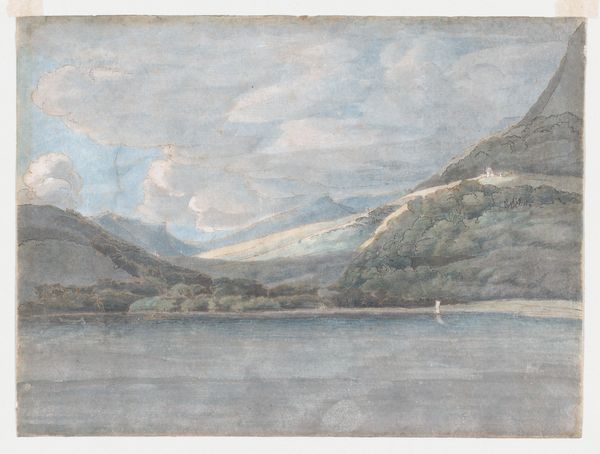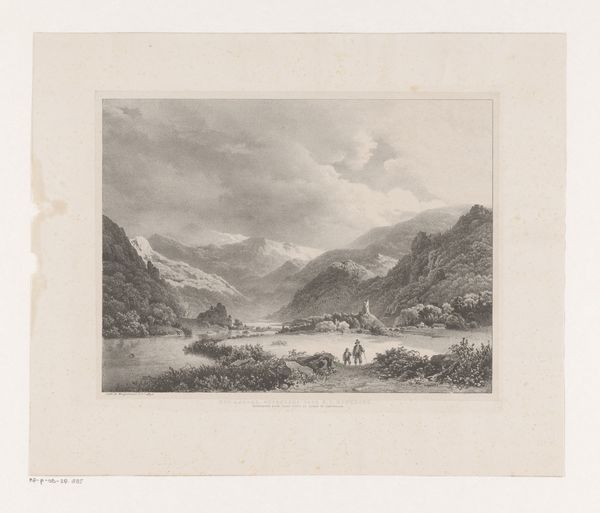
Dimensions: support: 206 x 305 mm
Copyright: CC-BY-NC-ND 4.0 DEED, Photo: Tate
Editor: This watercolor, "Derwentwater," by Thomas Hearne, presents a serene lakeside scene. It's so peaceful, but also feels a bit staged with the figures in the foreground. What do you see in this piece, especially in relation to its historical context? Curator: Hearne’s work, while seemingly idyllic, participates in a complex colonial gaze. Consider the picturesque movement of the time, framing landscapes for consumption. Who were these scenes really for, and whose stories were being erased in the process? Editor: So, you're saying the beauty might be masking a more problematic history? Curator: Precisely. Think about the labor and displacement that enabled wealthy tourists to enjoy these 'untouched' vistas. Even the act of painting flattens the land to an object. What do you think about that? Editor: I hadn't considered the power dynamics inherent in landscape art before. It gives me a lot to think about. Curator: It is essential to question whose narrative is being told through the guise of aesthetic pleasure.
Comments
Join the conversation
Join millions of artists and users on Artera today and experience the ultimate creative platform.
tate 8 months ago
⋮
Derwentwater is in the Lake District in Cumbria. The area’s vast and unspoiled landscapes were only beginning to be explored by tourists, artists and poets at the time Hearne made this watercolour. Hearne, born thirty-one years before Turner, was a member of the older generation of watercolour artists. His work was rooted in the traditions of topography – the careful study of particular places and buildings – but he adapted those conventions to the more ‘romantic’ leanings of modern taste. Gallery label, August 2004
